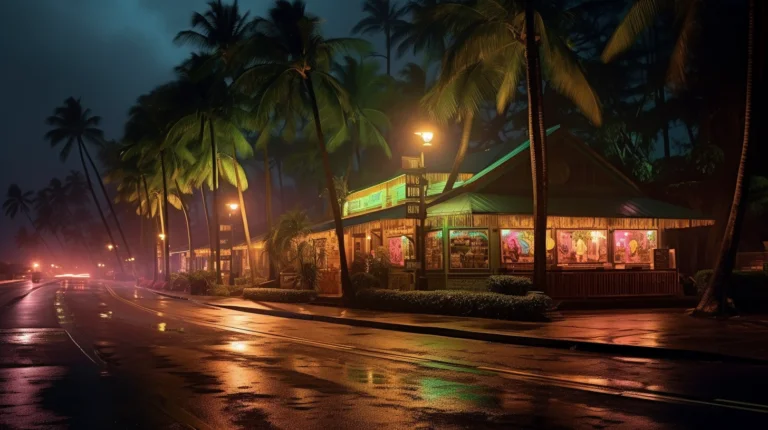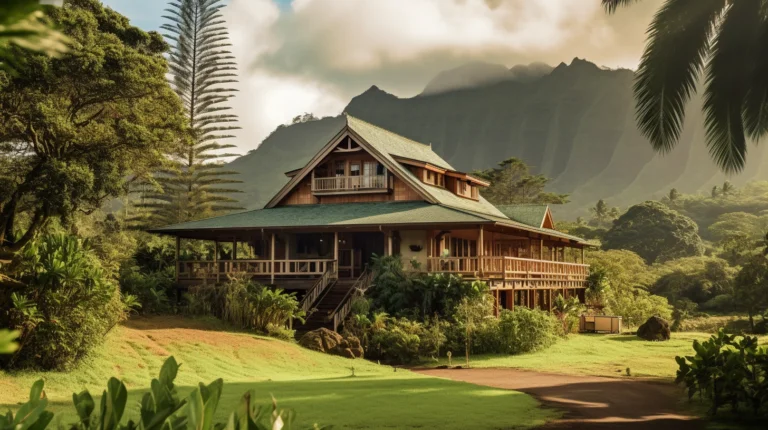Wildlife Wonderland: Explore Kauai’s Unique Animals 🌺
Are you ready for a wild adventure on the beautiful island of Kauai? Did you know that Kauai is home to an array of unique wildlife species found nowhere else in the world? In fact, over 90% of the plants and animals found on Kauai are endemic, meaning they are found only on this island. That’s right, Kauai is a wildlife lover’s paradise.
From the endangered Hawaiian Monk Seals to the majestic Humpback Whales that migrate to Kauai’s warm waters every year, there is so much to see and learn about the island’s wildlife. Whether you’re a seasoned animal enthusiast or just looking to appreciate the natural beauty of the island, this guide will provide you with everything you need to know about Kauai’s unique wildlife and how to responsibly view and interact with these amazing creatures.
So, grab your camera and get ready to explore the wild side of Kauai!
Key Takeaways
- Kauai is home to over 90% of endemic plants and animals, including unique species found nowhere else in the world.
- Endangered species like Hawaiian Monk Seals, Nene Geese, and Albatross are protected under the Endangered Species Act, and conservation efforts are ongoing.
- Responsible wildlife viewing is crucial, with tips including treating animals with respect, leaving no trace, and avoiding touching or feeding animals.
- Preservation of Kauai’s unique wildlife is important for future generations, and our actions can make a difference in protecting animals and their habitats.
Introduction to Kauai’s Unique Wildlife
Get ready to explore Kauai’s fascinating wildlife and discover why it’s truly a one-of-a-kind destination! Kauai’s unique wildlife: A Guide for Animal Lovers is the perfect resource for learning about the incredible variety of animals that call Kauai home.
From the endangered Hawaiian monk seal to the colorful birds that soar through the skies, this guide provides a comprehensive overview of the island’s wildlife. Conservation efforts are crucial to preserving Kauai’s unique wildlife, as many species are facing threats like habitat loss, invasive species, and climate change.
This guide not only introduces you to the animals themselves, but also highlights the work being done to protect them and their habitats. By understanding the challenges faced by Kauai’s wildlife, we can all take steps to ensure their survival and keep this special place thriving for generations to come.
Now, let’s dive into the world of the Hawaiian monk seals!
Hawaiian Monk Seals
You’ll be captivated by the precious Hawaiian Monk Seals and their adorable antics on the beautiful beaches of this tropical paradise. These seals are an endangered species, with only around 1,400 individuals remaining in the wild. They are endemic to the Hawaiian Islands and have great cultural significance in Hawaiian mythology and traditions.
Conservation efforts to protect the Hawaiian Monk Seals have been ongoing for many years. The National Oceanic and Atmospheric Administration (NOAA) has implemented various programs to monitor the seal populations, reduce human disturbance, and prevent entanglement in fishing gear. Despite these efforts, the population of Hawaiian Monk Seals continues to decline, making it even more important to appreciate and protect these magnificent creatures.
As you move on to the next section about ‘nene geese’, you’ll discover another unique and fascinating species that calls Kauai home.
Nene Geese
If you’re lucky, you might spot a nene goose while exploring the beautiful landscapes of Hawaii, and you’ll be amazed by their distinctive honking calls and unique appearance. These birds are endemic to Hawaii and are the rarest goose in the world, with only around 2,000 individuals remaining in the wild.
To get a better understanding of these fascinating birds, here are three things you should know:
- Nene geese have evolved to live in the harsh volcanic environment of Hawaii. They have shorter wings and legs compared to other geese, which makes them better suited for running and maneuvering around the rough terrain.
- The breeding season of nene geese is from September to April. During this time, males will perform a courtship dance to attract females. After mating, the female will lay 1-5 eggs and both parents will take turns incubating them for around 30 days.
- Nene geese are protected under the Endangered Species Act, and there have been conservation efforts to help increase their numbers. These include habitat restoration and captive breeding programs. The success of these efforts can be seen in the increase of nene geese populations from a low of 30 individuals in the 1950s to the current 2,000.
As you continue your exploration of Kauai’s unique wildlife, the next animal you may encounter is the humpback whale.
Humpback Whales
Witnessing the majestic humpback whales in their natural habitat is an awe-inspiring experience that will leave you speechless. These beautiful creatures migrate to the warm waters surrounding Kauai from December to May, providing ample opportunities for whale watching tours.
Humpback whales are known for their acrobatic displays, breaching out of the water and slapping their fins and tails on the surface. You may also hear their haunting songs, which can travel for miles underwater.
Humpback whales follow a predictable migration pattern, spending their summers in the colder waters of the north and traveling to the warmer waters near the equator to mate and give birth. They’re one of the largest animals on earth, with adult males reaching up to 50 feet in length and weighing up to 40 tons.
It’s a privilege to witness these gentle giants up close and learn about their unique behaviors and habits. As your whale watching tour comes to a close, get ready to explore the next section about albatross, another fascinating bird species that calls Kauai home.
Albatross
The sight of albatross soaring gracefully through the air is a breathtaking experience. These magnificent birds are among the largest flying birds in the world, with wingspans that can reach up to 11 feet. The albatross is a common sight on Kauai, particularly during breeding season, when they return to the island to mate and raise their young.
To give you a better idea of the albatross’s breeding habits, here is a table detailing their nesting behaviors:
| Nesting Behavior | Description |
|---|---|
| Nesting Season | November to July |
| Nesting Sites | Flat ground near cliffs |
| Nesting Pairs | Monogamous |
| Incubation Period | 65 days |
Despite their impressive size and strength, albatross populations have been declining in recent years due to human activities such as commercial fishing and pollution. Conservation efforts are underway to protect these remarkable birds and their habitats, including the establishment of protected breeding grounds and the use of sustainable fishing practices.
As we move on to learn about the Kauai Amakihi, it’s important to remember the importance of preserving the unique wildlife of the island for generations to come.
Kauai Amakihi
You’re in luck, because you’ve stumbled upon the fascinating Kauai Amakihi, a tiny bird with a big personality and an insatiable appetite for nectar. Here are four things you should know about this unique species:
- The Kauai Amakihi is endemic to the Hawaiian islands, meaning that it can only be found here.
- This bird is a member of the honeycreeper family, which is known for their bright colors and unique beak shapes.
- The Kauai Amakihi’s primary diet consists of nectar and insects, making it an important pollinator in its habitat.
- Unfortunately, the bird population has decreased due to habitat loss and introduced predators, highlighting the importance of habitat conservation efforts.
As you move on to the next section about sea turtles, remember to keep an eye out for these tiny birds and appreciate their important role in Kauai’s ecosystem.
Sea Turtles
As you walk along the sandy beaches, it’s easy to spot a sea turtle lazily swimming in the crystal clear waters.
Kauai’s sea turtles are a beloved and endangered species, numbering only a few thousand in the wild. The Hawaiian green sea turtle, known as honu, can be found throughout the Hawaiian Islands, including Kauai. These gentle creatures can grow up to four feet long and weigh up to 350 pounds.
Sea turtle conservation is a top priority for Kauai’s wildlife experts. These experts work tirelessly to protect the turtles’ nesting habitats, which are often located on the very beaches where tourists come to sunbathe.
To help preserve the turtles’ nesting habits, it’s important to stay away from marked areas and not disturb any nests you may come across. By respecting the turtles’ natural habitat, you can help ensure that these incredible creatures will be around for generations to come.
Tips for Responsible Wildlife Viewing
Now that you know about the wonderful sea turtles that call Kauai home, it’s important to understand how to view them responsibly. Ethical behavior is crucial when it comes to wildlife viewing, as our actions can have a significant environmental impact on the animals and their habitats.
Here are some tips for responsible wildlife viewing on Kauai:
- Keep your distance: It’s important to maintain a safe distance from wildlife to avoid causing stress or disrupting their natural behavior. A good rule of thumb is to stay at least 50 feet away from marine mammals and sea turtles.
- Respect their space: Avoid approaching animals too closely, and never attempt to touch or feed them. Remember, we are visitors in their home and should treat them with the utmost respect.
- Leave no trace: Be sure to dispose of any trash properly and avoid leaving any food or other items behind. These items can harm wildlife and disrupt their natural behavior.
By following these tips, you can enjoy the unique wildlife of Kauai while also preserving it for future generations to enjoy. Remember, our actions matter, and responsible wildlife viewing is key to protecting the animals and their habitats.
Conclusion
Congratulations! You’ve completed your guide to Kauai’s unique wildlife. By now, you should have a good understanding of the fascinating animals that call this beautiful island home.
But before you go, here’s an interesting statistic to leave you with: did you know that approximately 80% of the world’s humpback whale population migrates to Hawaii during the winter months? That’s right, Kauai is one of the best places in the world to spot these majestic creatures in their natural habitat.
If you’re lucky enough to visit during this time, make sure to book a whale watching tour for an unforgettable experience.
Remember, when it comes to wildlife viewing, responsible tourism is key. Always respect the animals’ space and follow the guidelines set by local organizations. By doing so, you’ll not only ensure the safety and well-being of the animals, but also help preserve the island’s unique biodiversity for generations to come.
Have a great trip!







